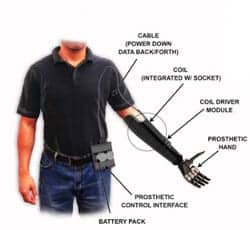Last Updated: 2008-01-03 14:29:11 -0400 (Reuters Health)
NEW YORK (Reuters Health) – People whose index fingers are shorter than their ring fingers — the so-called "male" or type 3 finger length pattern — are at increased risk for osteoarthritis of the knee, according to a report in the January issue of Arthritis and Rheumatism.
The association is independent of established osteoarthritis risk factors, lead author Dr. Michael Doherty, from the University of Nottingham in the UK, and colleagues note.
Previous reports have linked the "male" index-to-ring finger length ratio (2D:4D) to increased physical activity and to lower estrogen levels. Since both of these factors have also been tied to osteoarthritis, it is possible that such a finger pattern may predict the condition.
The current case-control study involved 2049 subjects with osteoarthritis of the knee or hip and 1123 controls. The 2D:4D ratio was assessed in all subjects using hand radiographs. Type 1 and type 2 patterns were defined as the index finger being longer than or equal to, respectively, the ring finger.
Overall, the type 3 pattern nearly doubled the likelihood of knee osteoarthritis; the odds ratio associated with this pattern was higher in women than in men: 3.05 vs. 1.45.
The researchers also found evidence of a dose response: the risk of knee osteoarthritis continued to rise as index finger length dropped relative to ring finger length.
The results with hip osteoarthritis were inconsistent.
"This is the first study to examine the possible association between the 2D:4D length ratio and osteoarthritis," the authors note. Further studies are needed to confirm the link between the type 3 pattern and osteoarthritis and to shed light on the underlying mechanisms.
Arthritis Rheum 2008;58:146-153.


